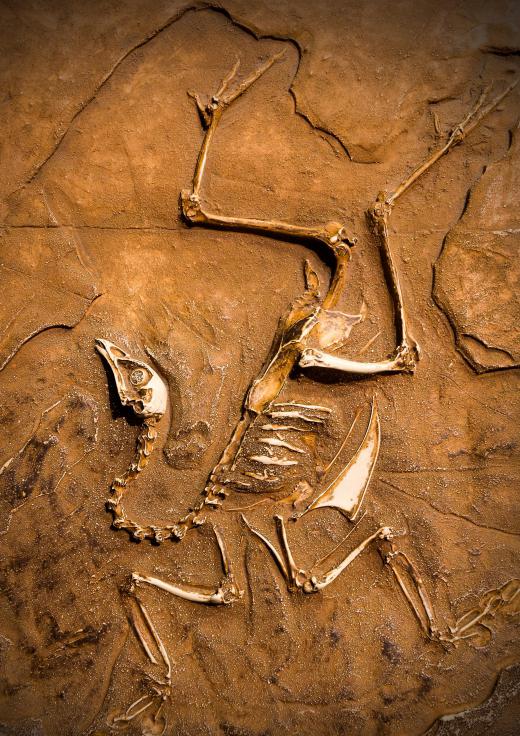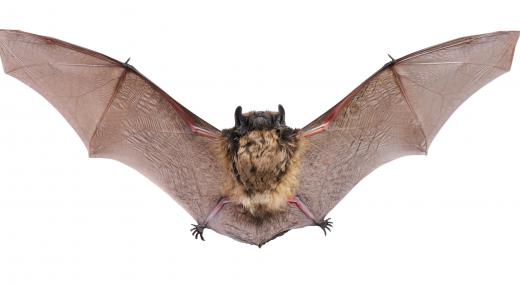What are Some Flying Animals?
 Michael Anissimov
Michael Anissimov
There are a variety of types of aerial locomotion in the animal kingdom, including parachuting, gliding, flying, and soaring, which all require distinct adaptations. Many microorganisms can "fly" because the physics of the Earth's atmosphere allows some tiny particles to stay aloft without lift.
True flying animals have evolved independently four times in the history of life on Earth: in insects (Early Carboniferous, 350 million years ago, Order Protodonata), pterosaurs (Late Triassic, 228 million years ago), birds (Late Jurassic, 155 million years ago, Archaeopteryx), and bats (Early Paleocene, 55 million year ago, Onychonycteris). So the gaps between the evolution of flying animals was 122 million, 73 million, and 100 million years respectively, for an average of about once every 100 million years.

Insect flight may have actually evolved much longer ago, in the Devonian Period. The earliest insect fossil, Rhyniognatha hirsti, estimated at 396-407 million years old, had dicondylic mandibles, a feature associated with flying insects. Thus, this insect may have had wings, or evolved from those that did. At the time, insects were the only non-microscopic terrestrial animals, and had a full ecosystem to diversify into.

Flying animals evolve incrementally from gliding animals. Gliding has independently many more times than flight, and includes animals as diverse as flying squirrels, flying frogs, Draco lizards, and various small mammals. For a flying animal to successfully evolve, it has to minimize its weight, develop wings, and the muscles to use them. Flying can be quite a beneficial adaptation, as it allows animals to cover far more ground and easily avoid non-flying predators. Post-insect flying animals primarily evolved to exploit the massive number of flying insects as a largely untapped food source.

Flying animals range greatly in size, from the miniscule 0.139 mm fairyfly, a wasp, to the massive extinct pterosaur, Quetzalcoatlus, with a wingspan of 10-11 meters (33-36 ft), about three times longer than a typical automobile. Until recently, the largest known flying animal was Pteranodon, a pterosaur with a wingspan of up to 7.5 m (24.6 ft). Pteranodon was thought to be about as large as the biomechanics of flight would allow, but this barrier was shattered by Quetzalcoatlus. There may be even larger flying animals in fossil strata, although it is admittedly hard to imagine.
AS FEATURED ON:
AS FEATURED ON:













Discussion Comments
Bats are so fascinating. They seem like they are so different from other kinds of mammals. They don't only fly, they also use sonar to see their surroundings. Some species of bat also live off blood. Vampire bats (yes, they are real, but not quite like the stories) live in Africa and take a little bite out of an animal in order to lap up the blood that comes out afterwards. I don't think anything but a flying animal could live off blood like this. Lots of insects do it too, although admittedly some of them aren't flyers.
I never thought of the fact that bacteria might be said to be flying as they drift around on the air. I guess that means that baby spiders also fly. Some kinds of spider weave a little bit of spider silk soon after they hatch and use it to catch the wind and travel away from their siblings so they can find their own space. Like at the end of Charlottes Web, when her children all drift away.
A flying spider is actually quite a scary thought, now that I've said that. They should make a horror movie about it.
Post your comments